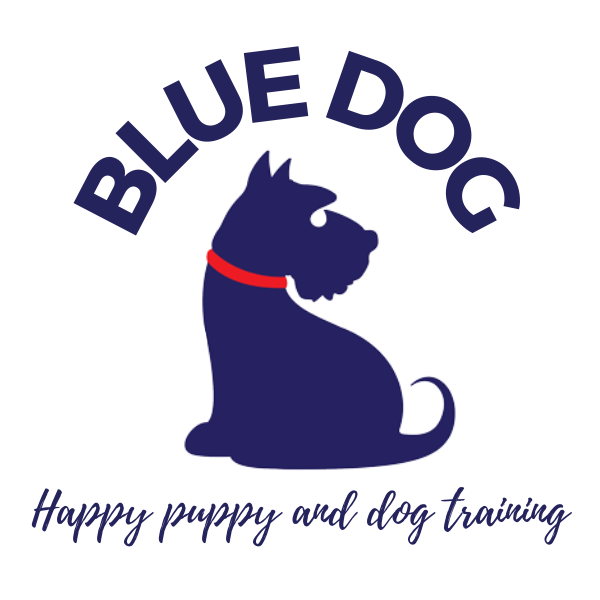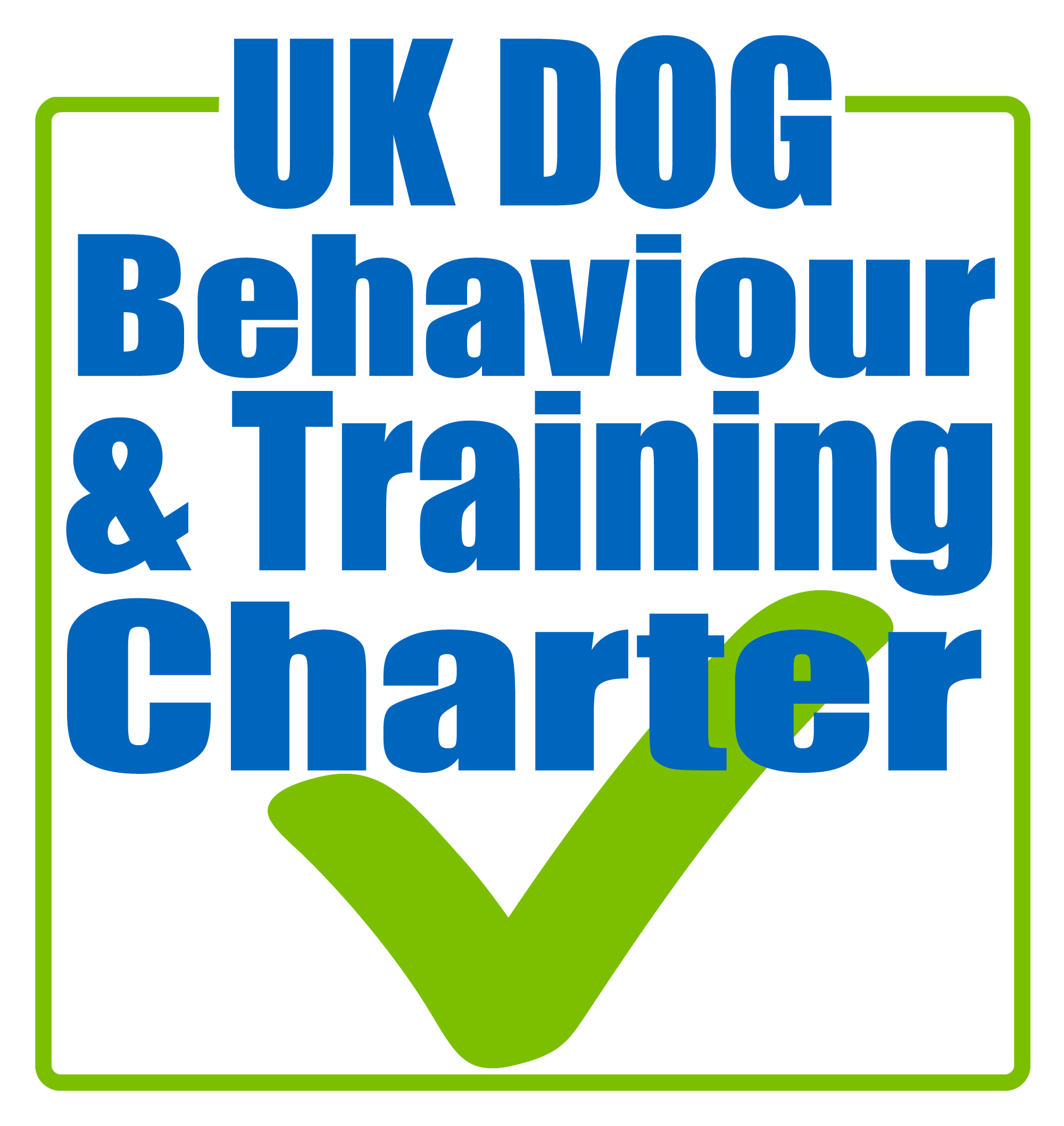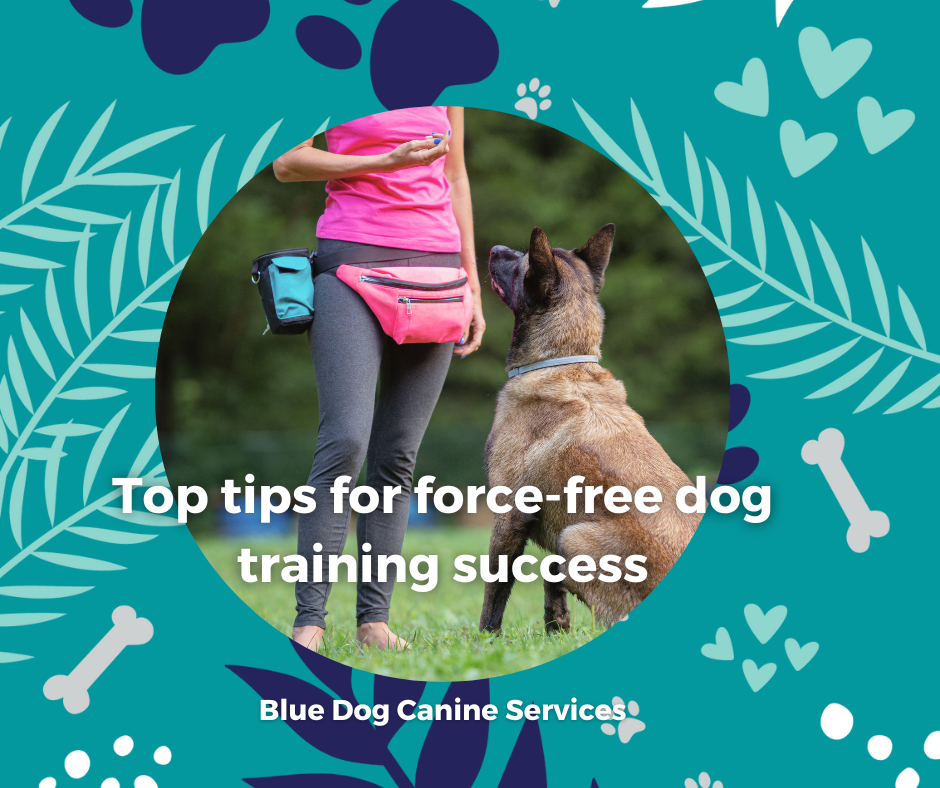
Reward based, training works. Scientific evidence tells us so!
However it does take patience, kindness and consistency to help your dog learn, and to achieve your training goals.
In this post I'm going to share some of my top dog training tips to help set you and your dog up for success.
Top tips for successful puppy and dog training:
1) Make sure your dog knows what you want them to do
Use consistent verbal cues and/or hand signals when training your dog - don't keep changing or mixing them up as you will confuse and frustrate your dog!Assign each behaviour you train a separate cue so your dog understands exactly what you are asking them to do. I like to be as black and white as possible in my training, to set my dogs up to succeed.
Remember dogs don't speak human. So try to keep things as simple as possible, and ensure everyone involved in your dog's life uses the same training cues to avoid confusion.
2) Tell your dog when they've got it right
I use a marker word "nice" or a clicker to tell my dogs when they do a good job!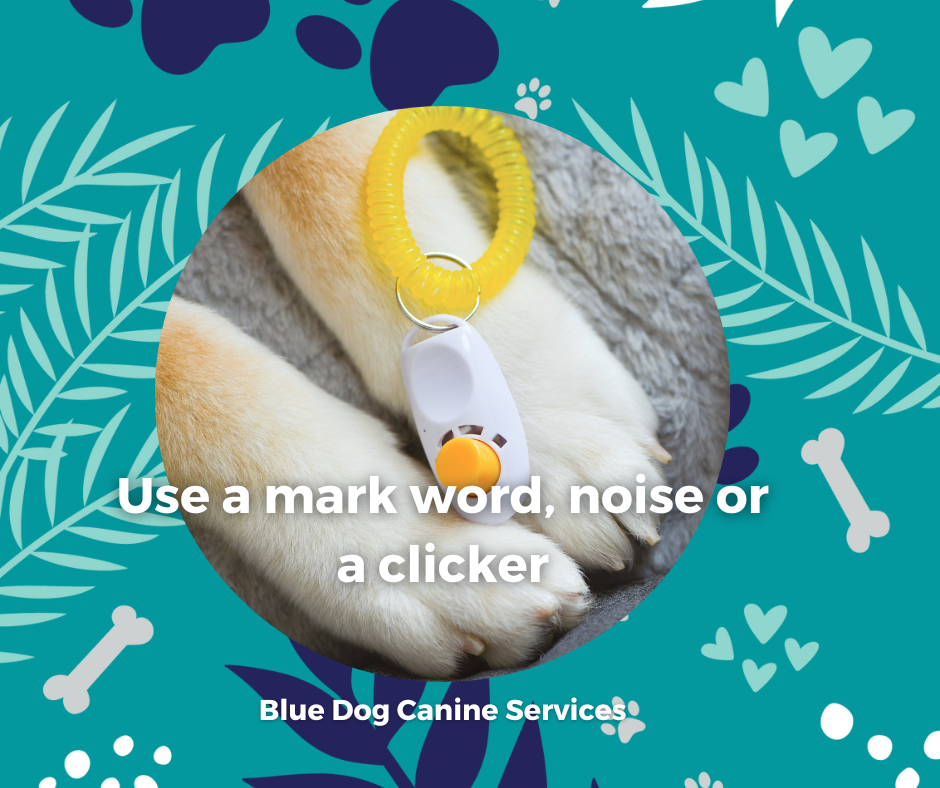
If you are teaching a sit, you would click mark the second their bum hits the floor. Then you would reward them. This teaches your dog that sitting when asked means pawsome stuff happens. This in turn means they are more likely to do this when asked next time.
A mark word or a clicker pinpoints the exact second your dog did the thing you wanted them to do. Think of it a bit like you taking a photo of the behaviour as it is happening and showing it to your dog. This helps them understand what it is you want them to do.
By following up with a reward, you are motivating your puppy or dog to offer the desired behaviour in the future when asked.
3) Motivate your dog to do the behaviour again (and again)
Make sure you use rewards that your dog values highly and make training fun for you both!By rewarding your dog you are strengthening the behaviours you train. You are motivating them to learn and to offer the behaviours again.
Rewards can be food, toys, play...anything that bring your dog joy!
My blog post "Are you rewarding your dog enough" is a useful read and explains reward based dog training in a little more depth.
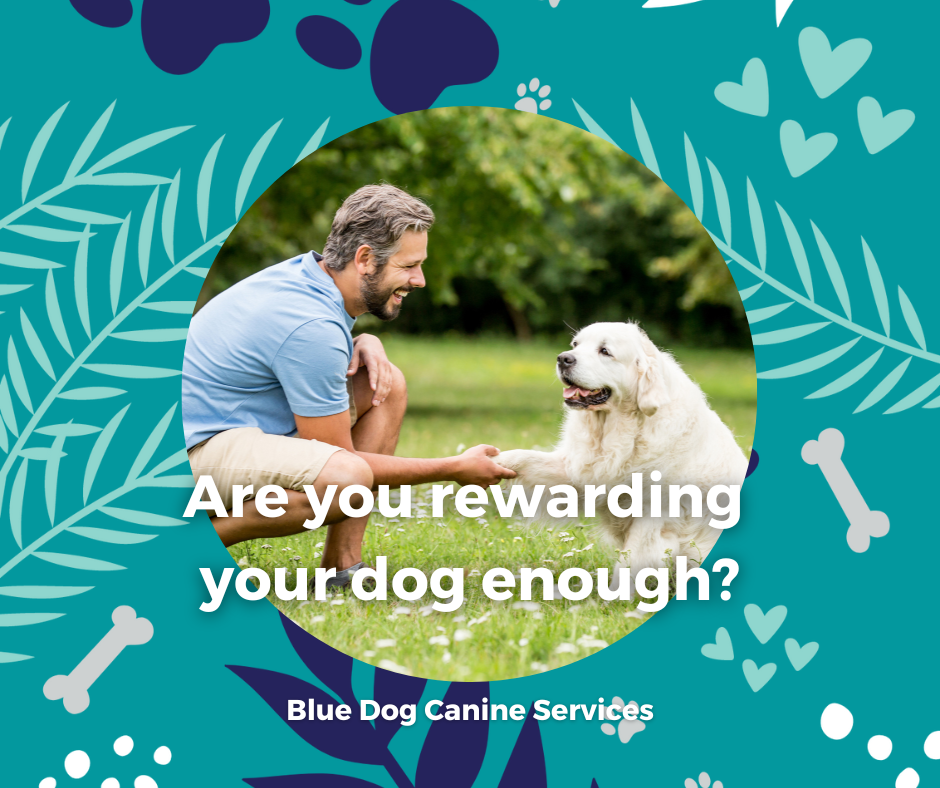
4) Only increase the level of difficulty when your dog is ready!
Set your dog up for success by starting off any training in a low distraction environment.Track your dog's progress at each stage and only move your dog on when they are ready.
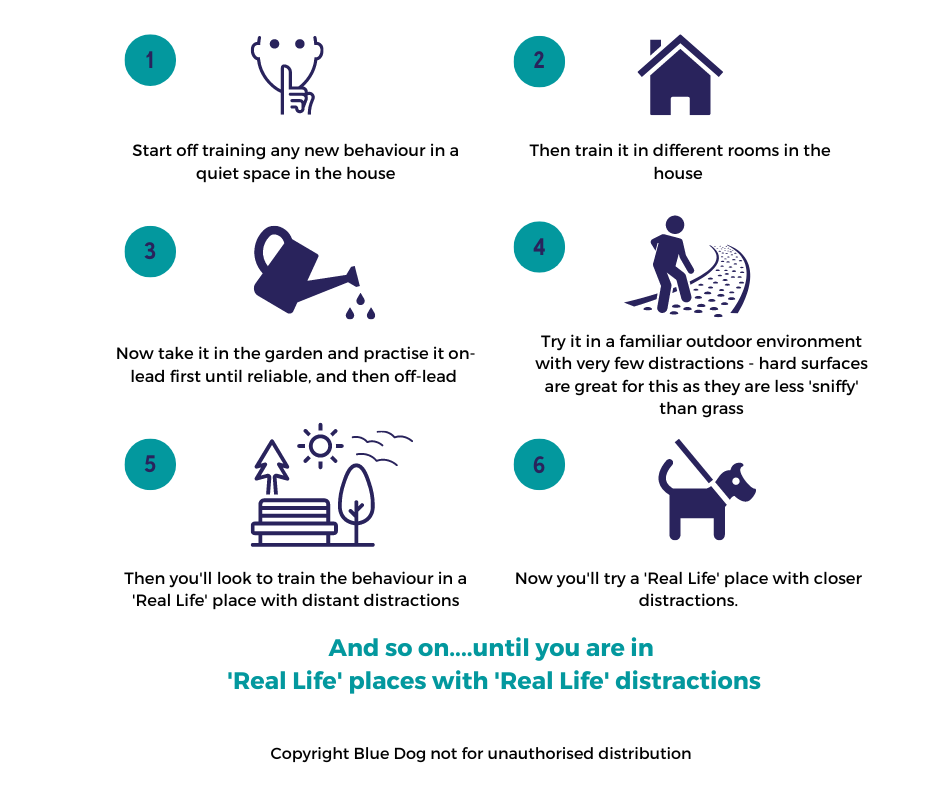
When your dog is ready, you can increase the level of difficulty (also known as "raising the criteria") using the 3Ds:
- Distraction
- Duration
- Distance
Increasing distraction: teaching your dog to loose lead walk outdoors
Increasing duration: teaching your dog to chill out on their bed for longer periods
Increasing distance: recalling your dog from further away
You can also mix and match your 3Ds, for example:
Increasing distraction and distance: recalling your dog from further away when their a dogs in the distance.
You may have to make things easier if your dog is struggling to get it right!
Dog training isn't a linear process and sometimes things don't go according to plan. If your dog is struggling to get a behaviour right, stop and ask if there is a way of helping them out. Sometimes you'll need to make it easier for them (this is also called "lowering the criteria").
It's really important to know when to "push", when to "stick" and when to "drop":
5) Train smarter not harder!
I find several short training sessions sprinkled throughout the day ideal , and far more effective than a long training session that isn't fun for your or your dog. 3 to 5 minute sessions are perfect.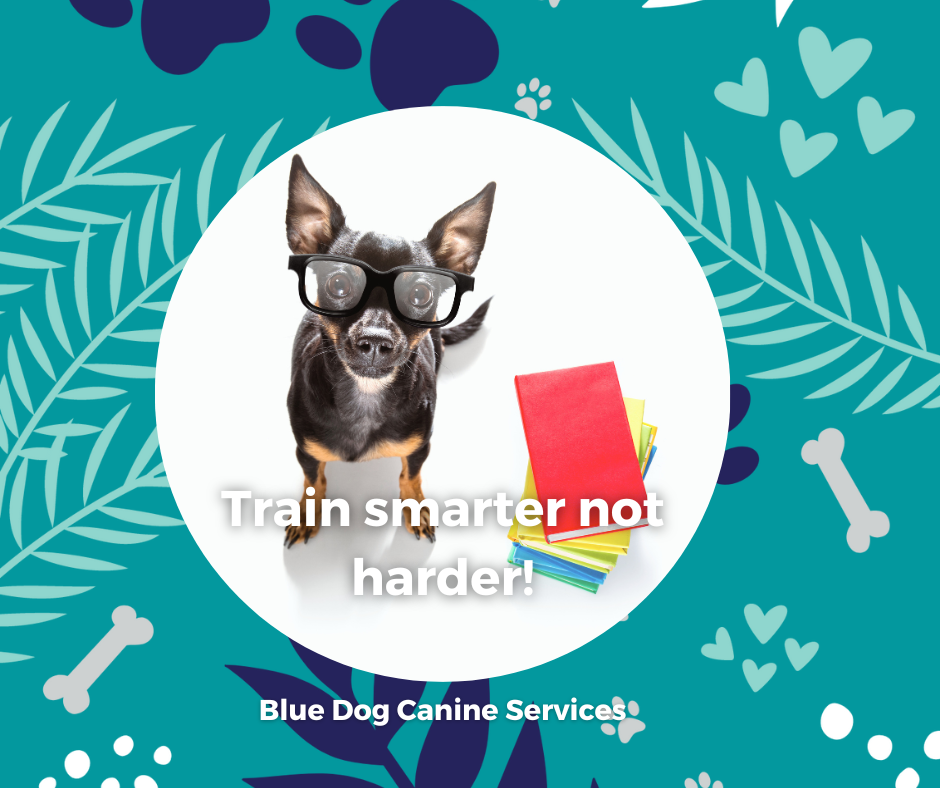
I look for opportunities throughout the day to do a quick session whenever I have a few minutes spare. One of my favourite times to train is whenever I'm waiting for the kettle to boil!
End each short training session on a success and follow it up with some play or a "find it" game.
Look for opportunities to train without trying by marking and rewarding good choices and behaviours from you dog, even when you haven't cued them! This is called capturing a behaviour.
For example you could mark and reward your dog:
- giving eye contact
- running back to you
- waiting calmly
- sitting without being asked
Be proactive and think about each interaction you have with your dog - is there an opportunity to reward a good choice?
6) Use it or lose it!
A behaviour isn't really trained until your dog reliably offers it:- anywhere
- on the first time of asking
- regardless of what distractions there are.
Don't set your dog up for training failure by failing to practise the things you train frequently and in lots of different contexts. There's always something new to train and always a new context to proof it in.
Check out my Behaviour Bingo to help you proof the behaviours you train.
Having fun training and learning is not just for puppies. It can and should be lifelong for all of our dogs because you really can teach an old dog new tricks!
Subscribe to The Happy Pack for four pawsome free dog training downloads!

